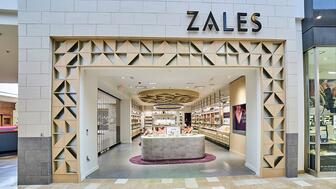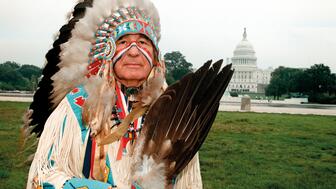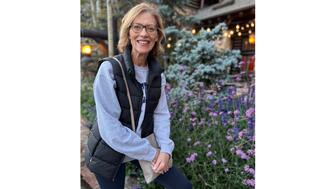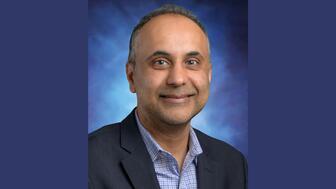What to Know About Online Shopping This Holiday Season
Deloitte and Adobe Analytics shared their insights on the season, from the retail sales forecast to the role of generative AI.

Holiday retail sales are expected to increase between 2.3 and 3.3 percent this year, according to Deloitte’s annual holiday retail forecast, released last month.
Dollar-wise, Deloitte said holiday sales are projected to total between $1.58 trillion and $1.59 trillion from November to January 2025.
It would be a slowdown compared with last year when holiday sales rose 4.3 percent year-over-year from November to January (considered by Deloitte to be the holiday period) totaling $1.54 trillion.
“Although the pace of increase in holiday sales will be slower than last year, we expect that healthy growth in disposable personal income, combined with a steady labor market, will support a solid holiday sales season,” said Akrur Barua, an economist at Deloitte Insights.
“While this holiday season reflects a return to trend levels of growth, retailers who focus on building loyalty and trust with consumers could be well positioned for success.”—Michael Jeschke, Deloitte
E-commerce is expected to be a key driver of retail sales this holiday season, with Deloitte forecasting growth between 7 to 9 percent year-over-year, with sales totaling between $289 billion and $294 billion.
During the 2023 holiday season, e-commerce sales grew 10.1 percent, totaling an estimated $270 billion.
“Our forecast indicates that e-commerce sales will remain strong as consumers continue to take advantage of online deals to maximize their spending,” said Michael Jeschke, principal at Deloitte Consulting LLP and retail and consumer products leader.
“While this holiday season reflects a return to trend levels of growth, retailers who focus on building loyalty and trust with consumers could be well positioned for success.”
In its report, also released last month, Adobe Analytics shared insights on online shopping this holiday season.
These are the top six takeaways from Adobe’s report.
1) Shopping on mobile will be especially popular this season.
U.S. online sales are expected to hit record levels, said Adobe.
The Adobe report forecasted 8 percent year-over-year growth to $240.8 billion this holiday season, which it considers to be Nov. 1 to Dec. 31.
Last year, shoppers spent $221.8 billion online, a 5 percent year-over-year increase.
Shoppers also are expected to spend a record amount shopping on their mobile devices.
The report forecasted 13 percent year-over-year growth in mobile sales to $121.8 billion, which would account for a 53 percent share of online spending this season, compared with a 47 percent share for desktop shopping.

2) Cyber Monday will still reign supreme.
Spending during so-called Cyber Week, the five-day period that includes Thanksgiving, Black Friday, and Cyber Monday, is expected to rise 7 percent year-over-year to $40.6 billion.
Adobe said it expects Cyber Monday to be the biggest shopping day of the season and the year, with spending expected to rise 6 percent to $13.2 billion.
However, Black Friday (10 percent) and Thanksgiving Day (9 percent) are expected to outpace Cyber Monday in terms of year-over-year growth.
Consumers will spend an estimated $10.8 billion on Black Friday and $6.1 billion on Thanksgiving, said Adobe.
In an Adobe survey of 5,000 consumers, 71 percent said they plan to shop online on Black Friday while 70 percent said they proactively check for deals during Cyber Week.
3) Despite inflation, shoppers are ready to buy more expensive items.
In its report, Deloitte noted that inflation may act as both a headwind and tailwind to holiday sales.
“While declining inflation aids consumers’ purchasing power, it also is expected to negatively impact the nominal rise in the dollar value of sales,” said economist Barua.
“In addition, rising credit card debt and the possibility that many consumers have exhausted their pandemic-era savings will likely weigh on sales growth this season compared with the previous one.”
Adobe found that months of “persistent inflation” led shoppers to buy less expensive goods across the major e-commerce categories.
However, Adobe expects to see this trend reverse for the holiday season, with sales of the most expensive goods in the categories it tracks set to increase by 19 percent compared with pre-season trends, largely due to competitive discounting.
It expects this effect to be strong in the sporting goods categories, as well as electronics and appliances, with a modest rise for apparel and toys.
The furniture and bedding and groceries categories may see a drop as consumers opt for lower-priced products.
4) Influencers will have an impact on Gen Z shoppers and beyond.
This year, Adobe’s data found that influencers are converting shoppers 10 times more than social media alone, a trend that is expected to continue this holiday season.
In Adobe’s survey, 37 percent of Gen Z respondents said they purchased something based on an influencer’s recommendation. (Members of Generation Z are currently about 12 to 27 years old.)
As for other marketing tools, paid search remained the top driver of retail sales, accounting for 28 percent of online revenue from Jan. 1 to Sept. 3, and is expected to grow by 1 to 3 percent this holiday season.
The fastest growth is expected for affiliates and partners, which includes social media influencers, forecasted to rise 7 to 10 percent. This segment accounts for 17 percent of online revenue.
The affiliates and partners channel is also expected to outpace retailer traffic from social media overall (nearly a 5 percent share), where growth is expected to be 4 percent to 7 percent.

5) It may be a record season for buy now, pay later purchases.
Adobe expects the buy now, pay later (BNPL) payment method to set a new record this season, up 11 percent year-over-year to account for $18.5 billion in online spending.
BNPL is expected to reach $9.5 billion in November, marking the highest month on record, while Cyber Monday is expected to be the most active day for BNPL, with spending totaling a record $993 million.
BNPL shopping is driven by younger customers on mobile, the report found.
In Adobe’s survey, 39 percent of millennials said they plan to use BNPL services this season, followed by 38 percent of Gen Zers.
The most common reasons cited for using BNPL include freeing up cash (22 percent) and the ability to purchase something they couldn’t afford otherwise (19 percent).
6) Generative AI tools will facilitate holiday shopping.
Generative AI is a type of artificial intelligence that can create new content, including text, images, videos, and audio. Consumers may be most familiar with ChatGPT or image generator DALL-E.
From Jan. 1 through Aug. 31, Adobe found that traffic to retail sites from generative AI-powered chatbots has doubled.
Direct referrals, meaning consumers clicking on a link to a retail site shared by an AI chatbot, also have increased, with rates 8 times higher than last year.
Adobe’s survey found that seven in 10 consumers who have used generative AI for shopping say it enhanced their experience. Two in five plan to use it for the holidays.
One-fifth of respondents said they use generative AI to find the best deals, followed by quickly finding specific items online (19 percent) and getting brand recommendations (15 percent).
The Latest

Linda Coutu is rejoining the precious metals provider as its director of sales.

The Signet Jewelers-owned store, which turned 100 last year, calls its new concept stores “The Edit.”

The supplier has a curated list of must-have tools for jewelers doing in-house custom work this year.

How Jewelers of America’s 20 Under 40 are leading to ensure a brighter future for the jewelry industry.

Footage of a fight breaking out in the NYC Diamond District was viewed millions of times on Instagram and Facebook.


The governing board welcomed two new members, Claire Scragg and Susan Eisen.

Sparkle with festive diamond jewelry as we celebrate the beginning of 2026.

Roseco’s 704-page catalog showcases new lab-grown diamonds, findings, tools & more—available in print or interactive digital editions.

The master jeweler, Olympian, former senator, and Korean War veteran founded the brand Nighthorse Jewelry.

In its annual report, Pinterest noted an increase in searches for brooches, heirloom jewelry, and ‘80s luxury.

Executive Chairman Richard Baker will take over the role as rumors swirl that a bankruptcy filing is imminent for the troubled retailer.

Mohr had just retired in June after more than two decades as Couture’s retailer liaison.

Shekhar Shah of Real Gems Inc. will serve as president of the Indian Diamond & Colorstone Association in 2026.

This year’s good luck charm features the mythical horse Pegasus, and is our first Piece of the Week of the new year.

Articles about crime, engagement rings, and a necklace worn in the World Series generated the most interest among readers.

As part of the leadership transition, Sherry Smith will take on the role of vice president of coaching strategy and development.

It marks the third time the country has headed the Kimberley Process. Ghana will serve as vice chair.

The new Bulova x Stetson designs highlight two animals often associated with the American West—the bison and the Texas Longhorn.

Its residency at Yamron Jewelers will run through May 2026.

From influential executives to innovative designers, we pay tribute to the people we said goodbye to this year.

The retailer is expanding into areas with large Indian and South Asian populations.

The Italian brand has opened its first flagship amid the peaks of the Dolomites in Madonna di Campiglio, Italy.

The new curation at the Natural History Museum of Los Angeles County showcases rare gem and mineral specimens in their uncut, natural state.

The couple pleaded guilty to concealing at least $127 million in cash transactions at its precious metals businesses.

In February 2026, the auction house will move its headquarters to the former Steinway Hall, a neoclassical landmark on Billionaires’ Row.

The new show will take place Jan. 23-25, 2026.

The former BHP Billiton leader and Gemfields chairman is remembered for his influential leadership throughout his 50-year mining career.




























